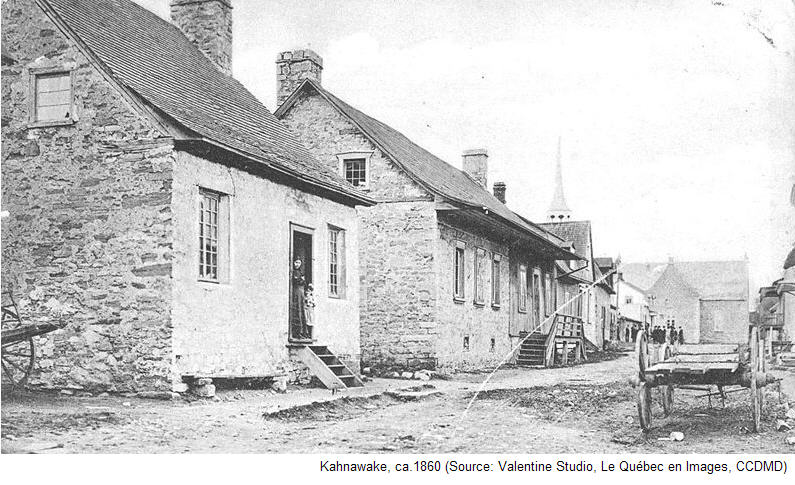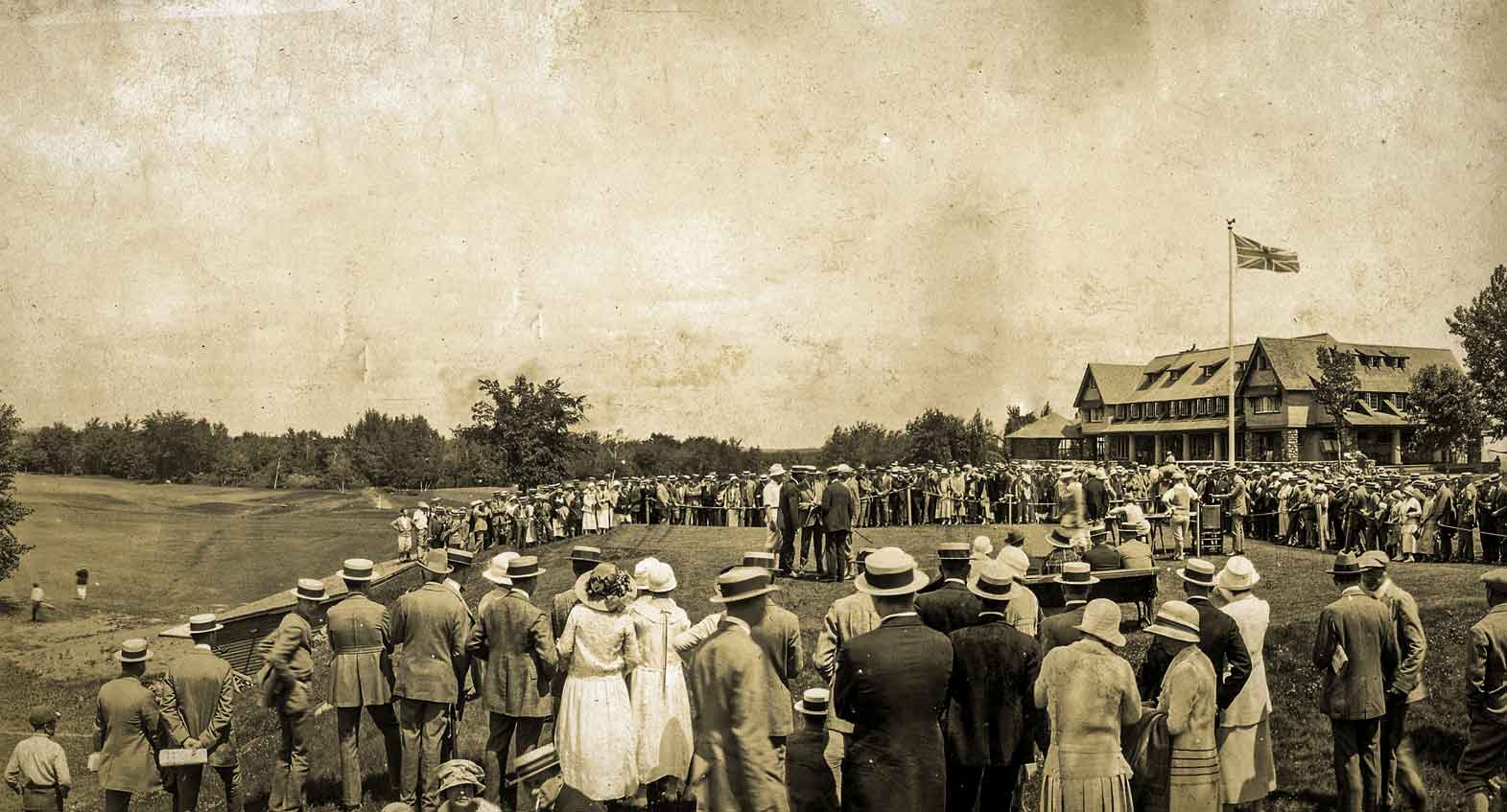The earliest known record of the area on which the present Kahnawake Indian Reservation is situated, dates back to 1647, when Sieur de Lauzon, a royal counsellor of France, granted to the Jesuit Order a gift of land on the south shore of the St. Lawrence River, extending from what is now St. Lambert to the foot of the Lachine Rapids.
In 1667 a palisaded mission for French settlers and Iroquois converts was established on the present site of the Town of Laprairie. Ten years later a grant of additional land was obtained by the missionaries, and the settlement was moved westerly to a location which they named "Kahnawake", a word derived from the Iroquois equivalent of "Village at the Rapids".
Many developments occurred during the ensuing years until the present location of the community was established in 1716. For a time, the reservation was named "Caughnawaga" which is believed to be a Dutch version of Kahnawake, while "Kanawaki", as used in the name of the Club, is an Anglicized adaptation of the Indian version.
Throughout the 17th and 18th centuries the mission was the most renowned in North America and the Indians played a prominent part in the early struggle between the French and English for control of the New World. Their superb skills as warriors, hunters and trappers, and their inherent desire for freedom sent many to outposts of the Northwest Fur Company and later the Hudson’s Bay Company. In fact wherever rivers afforded passage for their canoes, Kahnawake Indians were engaged in commerce with the white man. Because of their prowess in navigating hazardous waters, a contingent of them went on the Red River expedition of 1870, and on the Egyptian expedition for the relief of Khartoum in 1884.

The Indians living on the reservation today are the descendants of a proud race. Their native tongue has survived to this day, although they are now also fluent in English and French. They have developed an unusual skill for which they are known far and wide, that is the ability to work on high rise steel structures. The land area comprising the Reservation was set aside by promulgation in 1762 for the sole use and benefit of the Kahnawake Indians. The basis of allotment of land within the reservation appears to have been haphazard, and the descriptions in the available records are not clear. Thus, when administration of the Reservation was assumed by the Department of Indian Affairs of the Federal Government, considerable difficulty was encountered in establishing the rightful owners to the parcels of land, as well as other related matters.
The growth of the City and environs of Montreal, coupled with the accelerated tempo of modern living have had profound effects upon the Village of Kahnawake. It is located in the path of one of the main railway and highway arteries leading to the Island of Montreal, and its waterfront, once the fast moving Lachine Rapids, is now a part of the St. Lawrence Seaway which affords access from the heart of the North American continent to the sea.
The Golf Club is proud to be one of the largest employers on the reservation and contributes substantially to the economy of the village through the employment of greenskeepers, club house staff and caddies.


